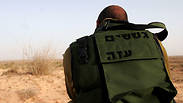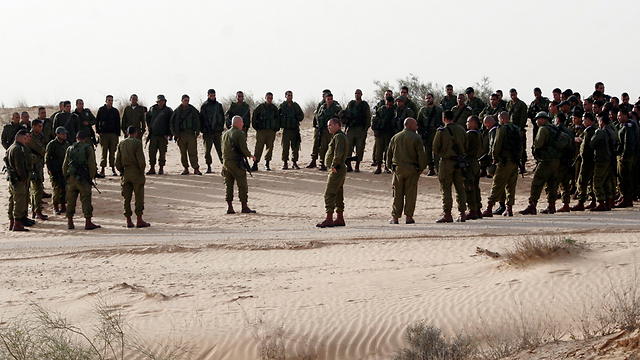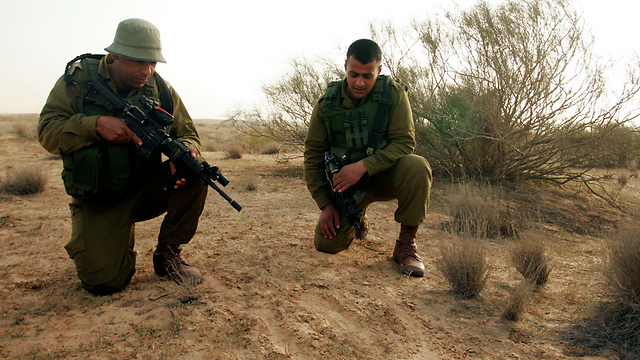
IDF set to cut half of mostly Bedouin tracker unit
Mostly volunteer unit to see major force reduction; some warn that move will damage Bedouin social integration and strengthen Islamic Movement.
The IDF plans to reduce the size of the its tracker unit, which is mostly comprised of Bedouin volunteer soldiers by about half, Ynet learned on Wednesday.The move is part of a multi-year plan to cut manpower and increase efficiency.
The Ground Forces Command hopes to enact the move as soon as next year, pending approval from senior ranks. The IDF confirmed that the initiative is under consideration, and that officers in the tracker unit – which specializes in locating enemies during chases and identifying signs of terrorist activity – have already expressed opposition.
S., who served as a tracker in the Gaza Division in the past few years and lives in the Negev, said: "The tracker unit was always the bridge between Israeli society and the Bedouin sector, and the contribution by the trackers to Israel went far beyond the operational dimension. Shutting down half of the unit and send dozens of trackers home, including many career soldiers who will not be hired in civilian jobs, means shooting the army and society in the foot.
"Islamic Movement operatives will fill the vacuum that will be created, and they are already agitating in the Bedouin towns and trying to prevent Bedouin youths from volunteering in the army," continued S. "The Islamic Movement has been speaking against recruitment in Bedouin mosques for years now."
The IDF has recently stepped up attempts to recruit Bedouin soldiers, including sending Bedouin troops to towns to encourage youths to enlist.
Over decades of deployment in places like Gaza and Lebanon, the trackers have exhibited operational efficiency and unique abilities to track enemies during a chase or identifying signs indicating cross-border infiltration by terrorists.
Most of the Bedouin soldiers in the IDF hail from towns in the north, and the vast majority of voluntary recruits serve in combat roles as trackers or in the Bedouin reconnaissance battalion, which for most of its history has operated in the southern Gaza Strip, and for the first time this year was also deployed in the Judea and Samaria Division in the Jenin area. The tracker unit receives training at the Lachish training base.
The trackers are called to the scene of every terror attack, and their day-to-day activity includes opening restricted roads in the mornings, then in the evenings ensure that no explosives were placed at the border fence and that there were no infiltrations.
The unit has in recent years produced several officers who were promoted to senior positions.
"Of course there are things that only the experienced eye of a tracker, who always leads in front of the troops, can identify and alert soldiers to," a Ground Forces Command officer told Ynet. "But Operation Protective Edge proved that proliferation of intelligence technology such as a UAV for every battalion commander or sending intel online to troops demands further thought – how we can make the tracker system more efficient in a way that will also minimize danger."
Another officer, who serves in the Southern Command and is involved in integrating Bedouins into the army, added: "Out of 300,000 Bedouins in the country, who are mostly in the south, we have around 1,200 Bedouin soldiers, including career soldiers. If the country invested more in them, we would get more from them. They are mostly under 20."












